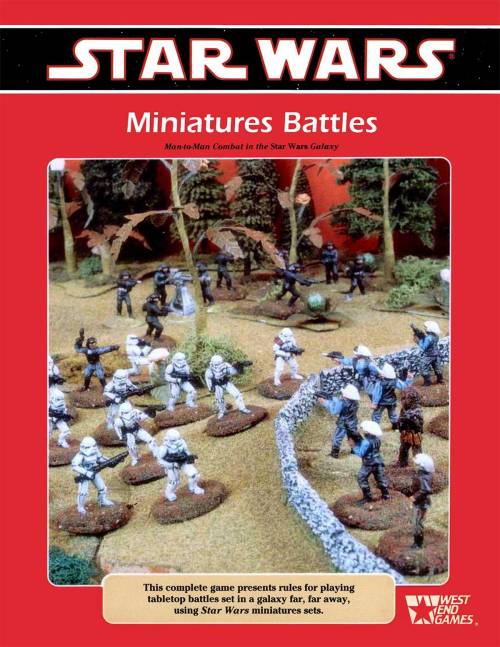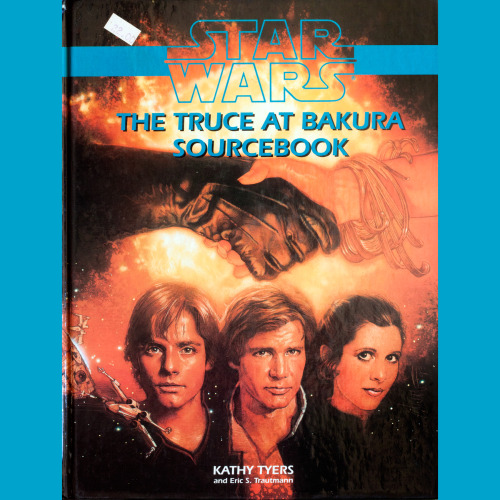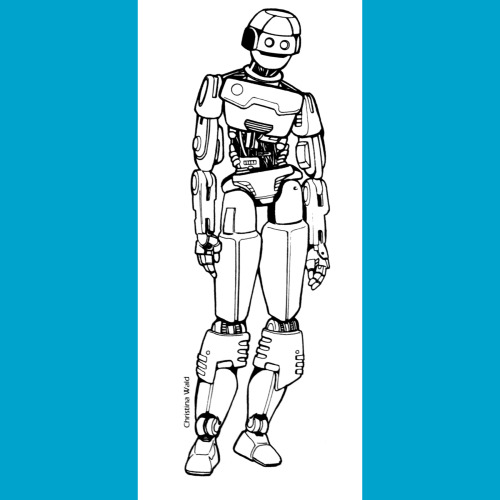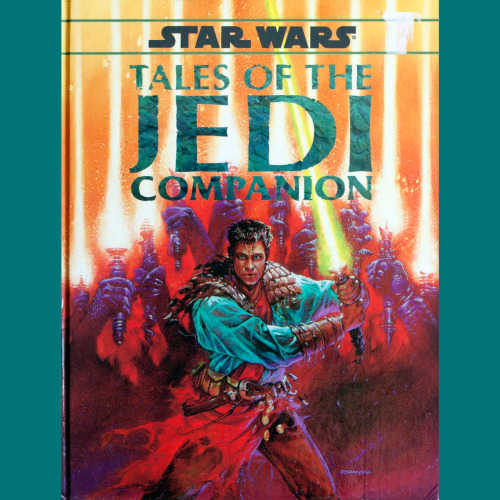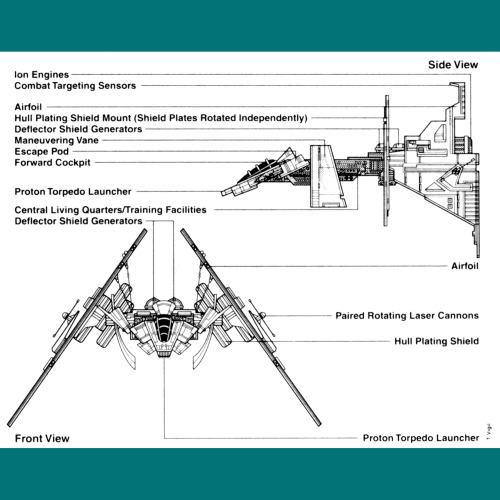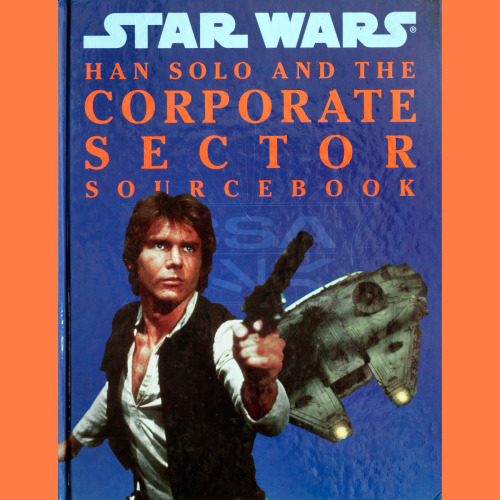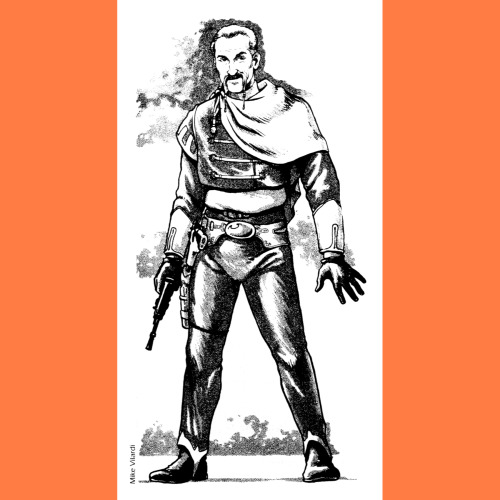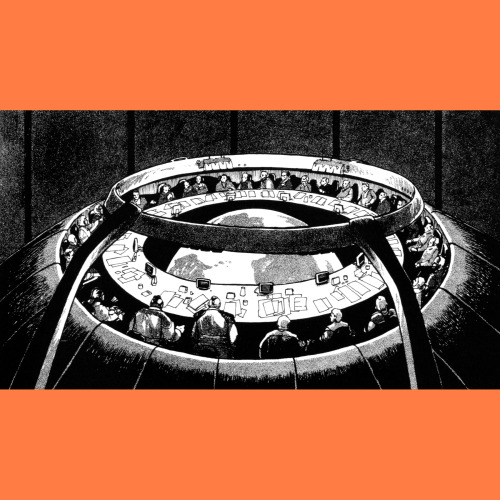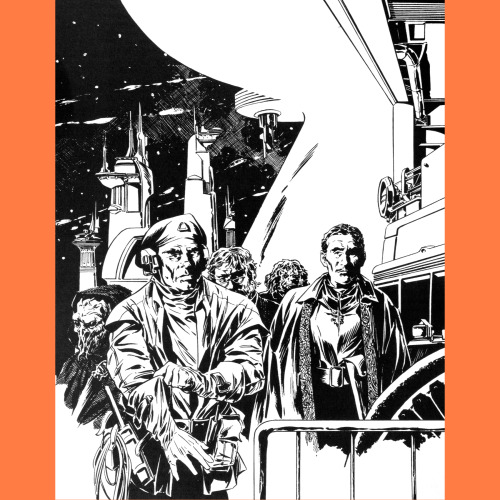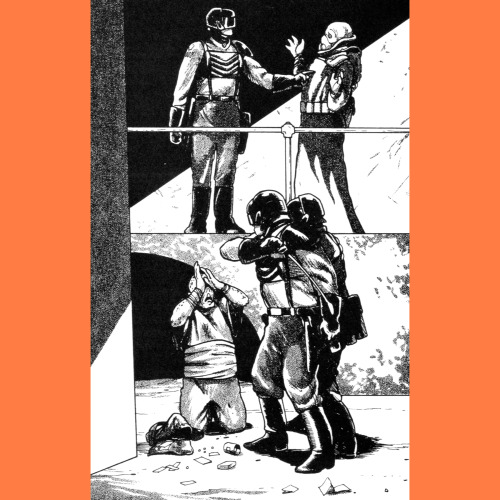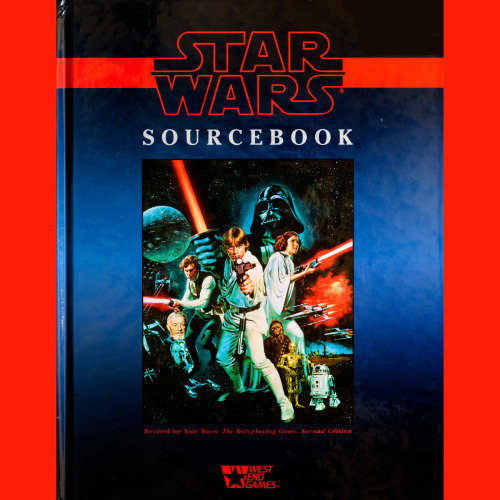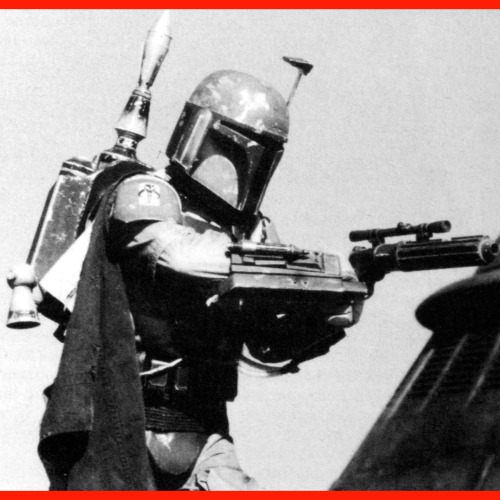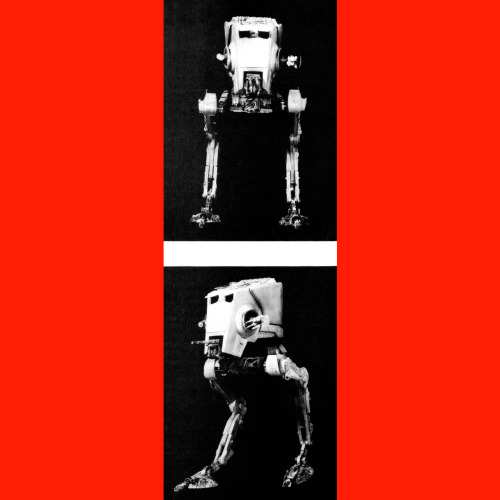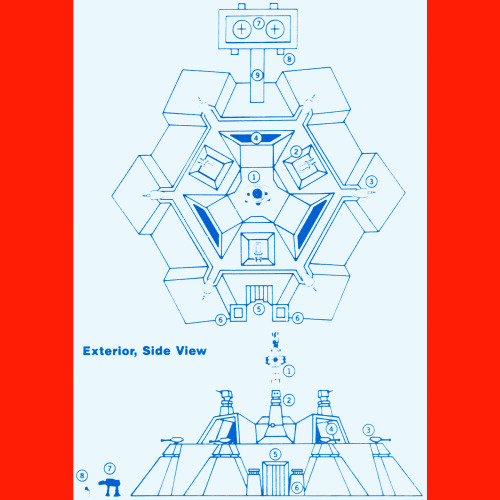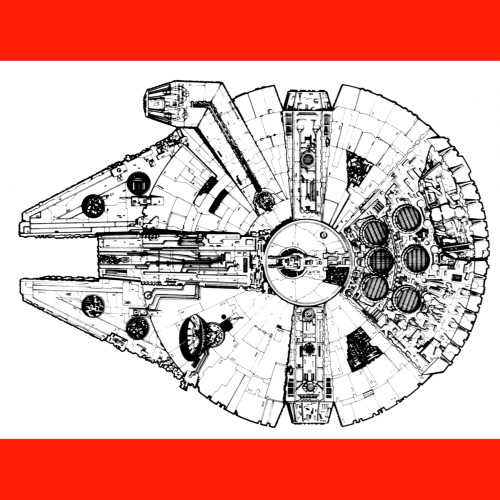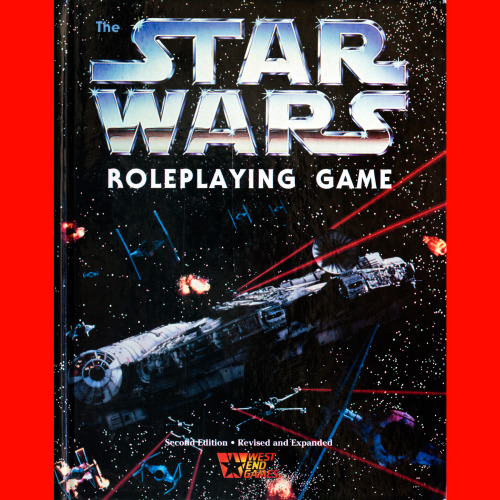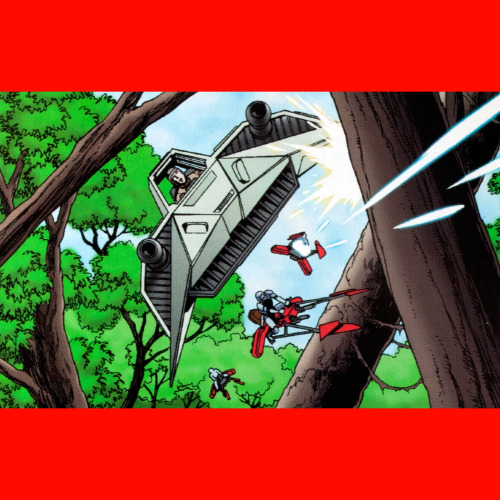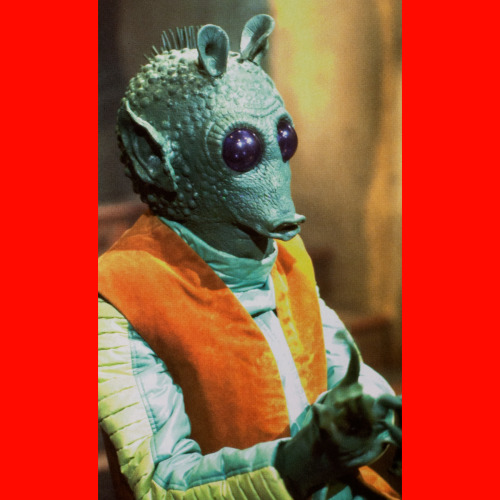#west end games
For May the Fourth the OnTableTop crew played West End Games’ D6 Star Wars: The Roleplaying Game (originally published in 1987, and 2nd ed in 1992)
Star Wars Miniatures Battles, Man-to-Man Combat in the Star Wars Galaxy, by Stephen Crane and Paul Murphy, West End Games, 1991, compatible with WEG’s original D6 Star Wars RPG, featuring Grenadier Models’ Star Wars miniatures by Bob Charrette and Julie Guthrie; winner of Best Miniature Rules at Origins 1991
Post link
1993 saw Bantam Spectrum publish two Star Wars novels. The first was The Last Command, the third and final part of Timothy Zahn’s Thrawn trilogy, which arguably revitalized Star Wars in the minds of the general public. The second was The Truce at Bakura. This is the start of a precipitous drop in quality in Star Wars novels.
The idea here is that the New Republic is scrambling to take control of the fallen empire and getting star systems to join. They visit Bakura as it is being attacked by an unknown alien threat, which forces the rebels to join forces with the hard-pressed imperial garrison. This sounds like some centrist BS if you ask me. There is no shortage of weirdness. One ruthless imperial officer is allowed to defect after attempting to kill Luke Skywalker and succeeding in destroying a rebel cruiser. Oh, and Darth Vader’s ghost shows up to beg Leia’s forgiveness. You know, that guy who was instrumental in blowing up her home planet. The only thing you can give the book is that the alien invaders, the Ssi-Ruuvi, aren’t nearly as bad as the Yuuzhan Vong. Those guys really suck.
Anyway, it is hard to make a good sourcebook out of a crummy novel. At least West End learned to be choosier after this. I shudder to think what sourcebooks for The Courtship of Princess Leia or The Crystal Star would be like.
Post link
When they announced that the follow up to the Dark Empire comic series was going to be a series about Jedi centuries before the original Star Wars movies, I was pretty uninterested. If I recall correctly, it was only my pal Ed’s glowing reviews that got me to finally check it out. I honestly still winge with reflexive disinterest a bit when I think about it, but the Tales of the Jedi comic is no doubt one of the best bits of 90s Star Wars, certainly in comics but even in general. Like Dark Empire, it is a fever dream of Star Wars, but one that actually feels correct in some fundamental way. Freedon Nadd! Exar Kun! Holocrons! Lightsabers with wires connected to little power packs! Not to mention paving the way for two excellent videogames.
The Tales of the Jedi Companion (1996) attempts to translate this remote epoch to the Star Wars Roleplaying Game. It draws from just the first two series — Tales of the Jedi and The Freedon Nadd Uprising, a mere seven issues — and everything from the setting to the tech feels pretty accurate to the comics. It is a big undertaking for a single 180-page book though, to set up an entire galaxy. So while I think the content of the comics is well represented, I struggle a bit to see how to play beyond the bounds the comic has clearly laid out. That might be a me thing (I did pass on the comic initially, remember) but I file this sourcebook as more one for folks who want to read about Star Wars than play Star Wars. Maybe I’d feel differently if it took into account all 36 issues. (It also bugs me that I can’t find comic writer Tom Veitch’s name in the credits anywhere).
Post link
From 1979 to 1980, Brian Daley wrote the three Han Solo Adventures novels — Han Solo at Star’s End, Han Solo’s Revenge and Han Solo and the Lost Legacy. I could never get through them, but they, along with the Marvel comic and the non-canon Splinter of the Mind’s Eye, form up the foundation of the expanded universe.
Han Solo and the Corporate Sector (1993) is a sourcebook for the first two novels (the last is set in the Tion Hegemony). The titular Corporate Sector is run by the the tyrannical Corporate Sector Authority, a stand-in for the Empire that sets the stage for exploring Solo’s history as an outlaw and smuggler. Despite having no real opinion on the source material, this is one of my favorite sourcebooks for WEGSW.
The intention is to inject a bit of the Western into Star Wars. There is a gunslinger (Galanadro, who is a pretty cool character, honestly), a jail break, swoop racing, frontier life. It also, inadvertently, introduces a whiff of cyberpunk into the sci fi of star wars, with immoral monolithic corporations and heists and lowlifes. Most of all, it is refreshing because the Corporate Sector Authority (I would abbreviate it, but I can’t help but read CSA as “community-supported agriculture”) is not the Empire and Star Wars definitely benefits from more villains that aren’t the Empire and a new superweapon. Variety is the spice of life!
Nice art by Tim Eldred, Alan Nunis and Mike Vilardi throughout. The only real crime here is that the Lando Calrissian trilogy of novels didn’t get a similar sourcebook treatment.
Post link
The revised second edition of The Star Wars Sourcebook (1994) is essentially the same as the first. The printing is better, there might be some tweaks to the text and layout, but the biggest change is the cover.
That change is kind of perplexing, actually, because the cover image — one of the poster paintings for the first Star Wars film — was actually the cover of the original Star Wars RPG rulebook (where the original Sourcebook had a cute painting of and Astromech droid using a computer terminal to print out pictures of characters, itself a charmingly odd choice of cover art). Passingly strange.
I do appreciate that the second edition resisted temptation to be bigger and better and all that. The idea behind the original was to flesh out the Star Wars galaxy as it stood at the end of the first film. This was to capture all the promise and excitement people felt at the end of seeing the first film, without muddying it up with any of the other stuff, even the other movies. It is smart, and ultimately, I think, an effective way of selling the core concept of the game. Releasing it as is, amidst a larger line of galaxy guides and technical manuals, feels like a real restatement of those original intentions that underscores that all the rest is optional. We’re always looking for more, so it always strikes me as interesting when something consciously decides to be less. In this case, to its credit.
Post link
Star Wars, Revised and Expanded (1996) is the third iteration of West End Games’ D6 Star Wars RPG. It is still considered part of the second edition, but while it is aesthetically inferior to the 1992 edition, it does feature some nice quality of life improvements.
Let’s take on the looks first. I think this book is UGLY. It is full color and the photo reproduction is great, but the illustrations (several of which are colored versions of art that appeared previously in black and white) is just…it reminds me of when I get an old D&D module and find someone had colored in the black and white illustrations, but with none of the charm. I find the art in the 1992 edition, particularly by Alan Nunis and Mike Vilardi inspiring and universe-expanding. This stuff here? Bland and generic.
But what we really care about is the substance, right? Right. Very little of the “revised and expanded” in the title refers to rules and mechanics. What few there are streamline play — you don’t notice them. And that’s the point, because the rest of the changes are all in the service of making this a faster, more cinematic, easier to learn and easier to play game. There are way more explanations (though I can do without the in-character chapter introductions - cornball city) and examples of play, there’s a solo adventure, quick reference rule handouts and a starter group adventure. It is just as chunky a RPG rulebook as every other single-book system rulebook in the 90s, but I am hard pressed to think of a contemporary RPG so focused on making itself easy and accessible. In 1996, we’re past the height of the complexity for complexity’s sake, but that impulse didn’t just vanish off the peak. That makes this iteration of Star Wars all the more impressive. If I ran WEGSW again, this is the rulebook I’d use (unless that bootleg third edition is substantially better, but I’ve not read that too closely).
Post link

